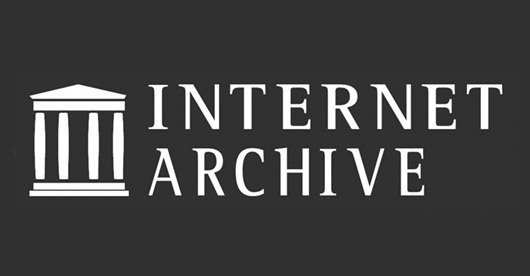Menu
Publications
2025
2024
2023
2022
2021
2020
2019
2018
2017
2016
2015
2014
2013
2012
2011
2010
2009
2008
2007
2006
2005
2004
2003
2002
2001
Editor-in-Chief

Nikiforov
Vladimir O.
D.Sc., Prof.
Partners
doi: 10.17586/2226-1494-2025-25-2-303-310
Search for three-dimensional images using the contour comparison method in problems of geological reservoir modeling
Read the full article
Article in Russian
For citation:
Abstract
For citation:
Litvinov P.A., Bessmertny I.A. Search for three-dimensional images using the contour comparison method in problems of geological reservoir modeling. Scientific and Technical Journal of Information Technologies, Mechanics and Optics, 2025, vol. 25, no. 2, pp. 303–310 (in Russian). doi: 10.17586/2226-1494-2025-25-2-303-310
Abstract
Methods for comparing three-dimensional images in problems of geological modeling of a reservoir are studied in order to improve their quality. The proposed method combines such advantages as global representation of shape, invariance to transformations, noise resistance, and computational efficiency. An approach based on the use of image moments for analyzing geological data in problems of geological modeling of a reservoir is developed and substantiated. The problem of comparing three-dimensional images is solved using the mathematical apparatus of algebraic invariants. The essence of the proposed approach is to calculate the moments of three-dimensional images for comparing the invariants of the contours of the standard and sample. The result of the comparison is a quantitative metric of the conformity of the compared contour to the desired standard. Developed software tools were built into the overall modeling and analysis pipeline of the Gempy package. The method showed satisfactory results on the test geological model. The recognition accuracy allows using the developed tools as a recommender system. The possibility of using the proposed method to search for a given object in a geological model and limited applicability for verifying a simplified model during iterative calculations are confirmed. The proposed method is compared with the Hausdorff metric, the cross-section comparison method, the SIFT and SURF methods, and the grid interpolation method. It is shown that the proposed method can be expanded to more complex geological formations for working with heterogeneous structures. The developed tools can be integrated with geological modeling systems, database management systems, and analytical platforms.
Keywords: three-dimensional image search, contour comparison, image moments, algebraic invariants, geological modeling
Acknowledgements. The authors express their acknowledgements to Nelly Igorevna Gololobova for consulting in the field of geological modeling.
References
Acknowledgements. The authors express their acknowledgements to Nelly Igorevna Gololobova for consulting in the field of geological modeling.
References
1. Bilibin S.I., Diakonova T.F., Isakova T.G., Istomin S.B., Iukanova E.A. A three-dimensional geological model is a necessary and mandatory stage in studying an oil and gas field. Nedra 21, 2007, no. 4, pp. 38–42. (in Russian)
2. Grigorev Yu.M., Kharbanov M.V. The development of a program module for creating simplified structural 3d oil reservoirs model. Mathematical notes of Yakutsk State University, 2013, vol. 20, no. 2, pp. 246–255. (in Russian)
3. Hu M.-K. Visual pattern recognition by moment invariants // IRE Transactions on Information Theory. 1962. vol. 8, no. 2, pp. 179–187. https://doi.org/10.1109/Tit.1962.1057692
4. Boyce J.F., Hossack W.J. Moment invariants for pattern recognition. Pattern Recognition Letters, 1983, vol. 1, no. 5-6, pp. 451–456. https://doi.org/10.1016/0167-8655(83)90085-5
5. Nguyen D.T.,Khacumov M.V. The method of comparing a 3d object model with a 2d image based on invariant moments. Program Systems: Theory and Applications, 2017, vol. 8, no. 4(35), pp. 209–220. (in Russian)
6. Mukundan R., Ramakrishnan K.R. An iterative solution for object pose parameters using image moments. Pattern Recognition Letters, 1996, vol. 17, no. 12, pp. 1279–1284. https://doi.org/10.1016/0167-8655(96)00099-2
7. Flusser J. On the independence of rotation moment invariants. Pattern Recognition, 2000, vol. 33, no. 9, pp. 1405–1410. https://doi.org/10.1016/S0031-3203(99)00127-2
8. Zitova B., Flusser J. Image registration methods: a survey. Image and Vision Computing, 2003, vol. 21, no. 11, pp. 977–1000. https://doi.org/10.1016/S0262-8856(03)00137-9
9. Sadjadi F.A., Hall E.L. Three-dimensional moment invariants. IEEE Transactions on Pattern Analysis and Machine Intelligence, 1980, vol. 2, no. 2, pp. 127–136. https://doi.org/10.1109/TPAMI.1980.4766990
10. Thakare N.M., Thakare V.M. A Supervised Hybrid Methodology for Pose and Illumination Invariant 3D Face Recognition. International Journal of Computer Applications, 2012, vol. 47, no. 25, pp. 24–29. https://doi.org/10.5120/7537-474
11. Sommer I., Muller O., Domingues F.S., Sander O., Weickert J., Lengauer T. Moment invariants as shape recognition technique for comparing protein binding sites. Bioinformatics, 2007, vol. 23, no. 23, pp. 3139–3146. https://doi.org/10.1093/bioinformatics/btm503
12. Xu D., Li H. 3-D affine moment invariants generated by geometric primitives. Proc. of the 18th International Conference on Pattern Recognition (ICPR'06), 2006, pp. 544–547. https://doi.org/10.1109/icpr.2006.21
13. Suk T., Flusser J., Boldyš J. 3D rotation invariants by complex moments. Pattern Recognition, 2015, vol. 48, no. 11, pp. 516–3526. https://doi.org/10.1016/j.patcog.2015.05.007
14. Mamistvalov A.G. n-Dimensional moment invariants and conceptual mathematical Theory of recognition n-Dimensional solids. IEEE Transactions on Pattern Analysis and Machine Intelligence, 1998, vol. 20, no. 8, pp. 819–831. https://doi.org/10.1109/34.709598
15. Lowe D.G. Distinctive image features from scale-invariant keypoints. International Journal of Computer Vision, 2004, vol. 60, no. 2, pp. 91–110. https://doi.org/10.1023/b:visi.0000029664.99615.94
16. Bay H., Tuytelaars T., Van Gool L. SURF: Speeded up robust features. Lecture Notes in Computer Science, 2006, vol. 3951, pp. 404–417. https://doi.org/10.1007/11744023_32













